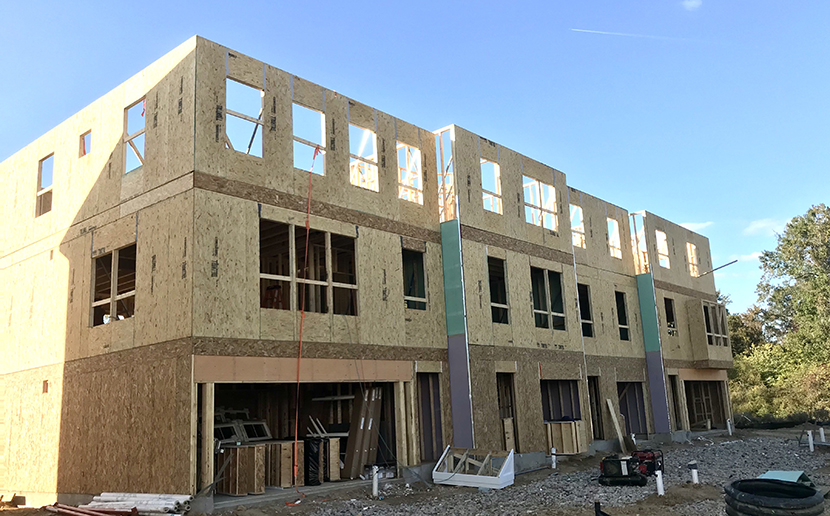
September Housing Starts Post Modest Increase

Housing starts in September rose modestly following a red-hot summer, HUD and the Census Bureau reported yesterday.
The report said privately owned housing starts rose to a seasonally adjusted annual rate of 1,415,000 in September, 1.9 percent higher than the revised August estimate of 1,388,000 and 11.1 percent higher than a year ago (1,274,000). Single-family housing starts in September rose to 1,108,000; 8.5 percent higher than the revised August figure of 1,021,000. The September rate for units in buildings with five units or more fell to 295,000, down by nearly 15 percent from 346,000 in August and down by 17.4 percent from a year ago.
Regionally, results were strong, but mixed. In the largest region, the South, starts rose by 6.2 percent to 755,000 units, seasonally annually adjusted, in September from 711,000 units in August and improved by nearly 9 percent from a year ago. In the West, starts rose by 1.4 percent in September to 350,000 units from 345,000 units in August and improved by 13.6 percent from a year ago.
In the Northeast, starts jumped by 66.7 percent to 145,000 units, seasonally annually adjusted, in September from 87,000 units in August and improved by 26.1 percent from a year ago. In the Midwest, however, starts fell by nearly 33 percent in September to 165,000 units from 245,000 in August but improved by 4.4 percent from a year ago.
“Builders are gearing up for an even faster pace in the months ahead, which is welcome news for households wanting to buy a new home,” said Mike Fratantoni, Chief Economist with the Mortgage Bankers Association. “The housing market is being constrained by the lack of inventory, with both new and existing homes being sold faster than new listings are arriving.”
Fratantoni noted home prices are once again increasing much faster than household incomes. “Even though mortgage rates remain at record lows, unless more homes are built, first-time buyers will have an increasingly difficult time being able to find a home they can afford,” he said.
Mark Vitner, Senior Economist with Wells Fargo Securities, Charlotte, N.C., said September housing starts came in “well-below expectations.”
“The housing sector has been an early and clear bright spots of the re-opening economy,” Vitner said. “Home sales took off immediately after the lockdowns were lifted and new single-family construction fell less and recovered sooner than any other major industry.”
Vitner said the overall level of starts should hold up fairly well for the year as whole. “Single-family homebuilding is steadily gaining momentum,” he said. “There has been a great deal written about the spike in lumber prices and its impact on new construction. Framing lumber prices are currently about 65% above their year-ago level and are adding considerable expense to the price of a home. Buildable lots and labor are also in short supply and are the greatest constraint to a more dramatic rise in homebuilding. Affordability also remains a major challenge.”
Building Permits
Privately owned housing units authorized by building permits in September rose to a seasonally adjusted annual rate of 1,553,000, 5.2 percent higher than the revised August rate of 1,476,000; from a year ago, permits rose by 8.1 percent from August (1,437,000). Single-family authorizations in September rose to 1,119,000; 7.8 percent higher than the revised August figure of 1,038,000. Authorizations of units in buildings with five units or more rose to 390,000 in September, up by 1 percent from August (386,000) but down by 22.4 percent from a year ago.
Housing Completions
Privately owned housing completions in September rose to a seasonally adjusted annual rate of 1,413,000, 15.3 percent higher than the revised August estimate of 1,226,000 and 25.8 percent higher than a year ago (1,123,000). Single-family housing completions in September rose to 921,000; 2.1 percent higher than the revised August rate of 902,000. The September rate for units in buildings with five units or more jumped to 480,000, 52.4 percent higher than August (315,000) and 79.1 percent higher than a year ago.
